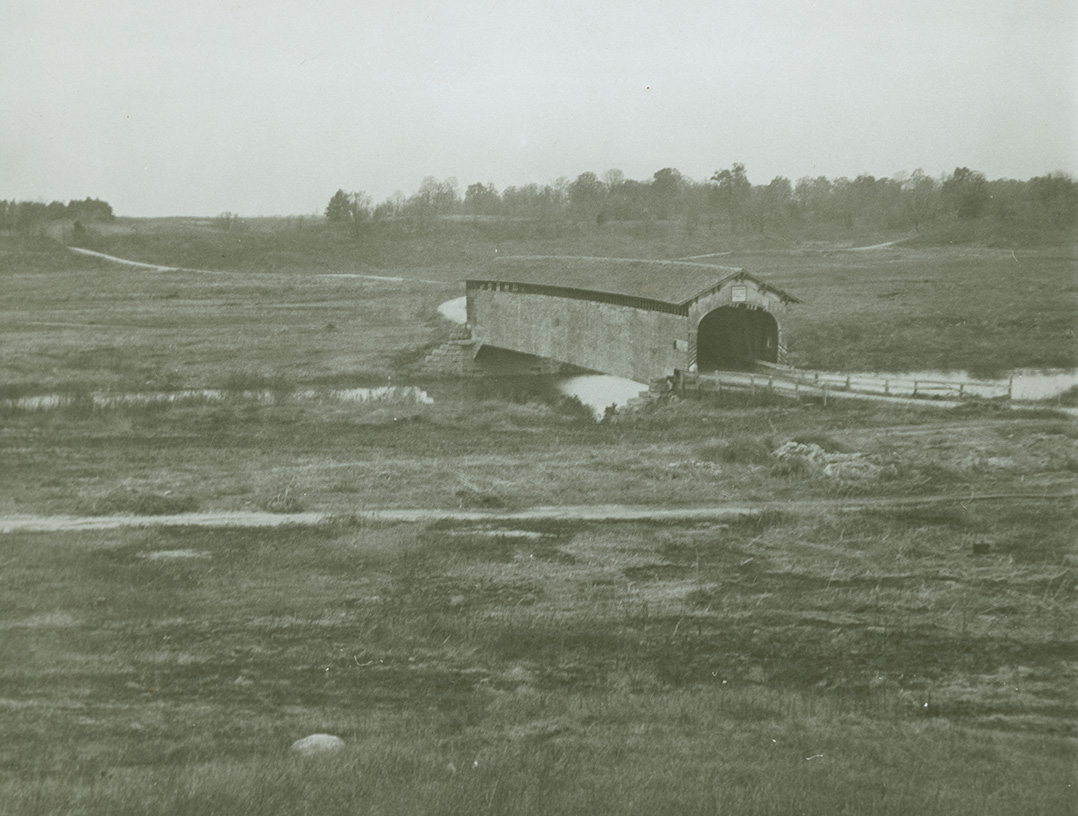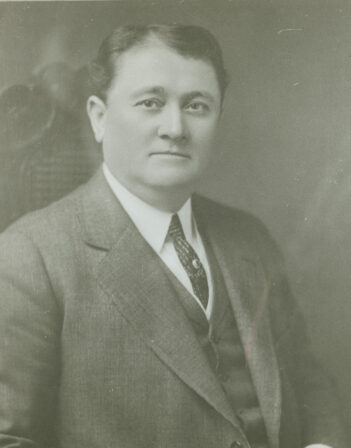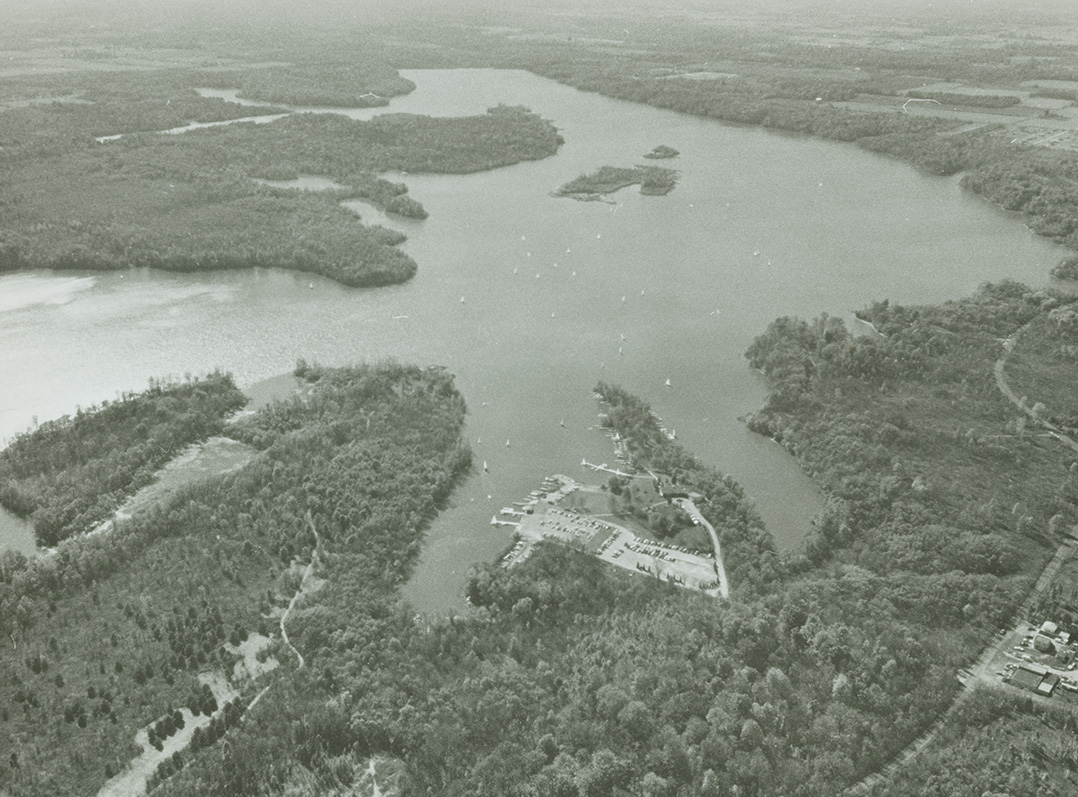Geist Reservoir is a place for summer outdoor fun, with boating, fishing and swimming opportunities. But that wasn’t always the case. It was built with a very practical purpose in mind, and recreation was restricted for many decades.
Suzanne Hahn is vice president of Archives and Library with the Indiana Historical Society. She said the reservoir was developed by the Indianapolis Water Co., and planning for the large project started in the late 1920s.
“At that time, they did a report looking at the future water needs of Indianapolis,” she said. “The natural supply they were getting from the White River and Fall Creek wasn’t going to be sufficient. They started looking at land that is now Geist Reservoir.”
The company, led by owner and president Clarence Geist, started buying up what was then mostly farmland in the area surrounding Fall Creek, along with one small community called Germantown. That community had been established in 1834, according to its history page on the “This is Fishers” website.

Work on Geist Reservoir started in 1941, which included clearing land, building a dam and redirecting water from Fall Creek. It officially opened for business in 1943, and was named for Clarence Geist, who died before construction even began. Upon completion, it became the second-largest man-made lake in Indiana.
Hahn said the reservoir did what it was intended to do — supplement the water needs for the growing city of Indianapolis. And that was pretty much its only function for many years.
“When they first opened it, it was restricted as far as what people could use it for — almost a wildwood area,” Hahn said. “Boating and swimming weren’t allowed. There was no residential development during that time. They did have a couple areas for picnics, but it wasn’t the kind of recreation area or development that we see today.”
Hahn said boating by permit began in 1953, but even then, people couldn’t use their own boats. They had to go through a local vendor.
“They did have a sailing club that opened in 1955, so gradually some of these restrictions began to lift,” Hahn said.

(Photo used with permission from Indiana Historical Society, M1400)
Around 1971, speedboats were allowed on the water.
Hahn said fish from Fall Creek populated the reservoir, and it was stocked by the Indiana Conservation Department. According to various Indiana fishing websites, it’s known for bass and catfish.
Housing along Geist Reservoir also took time to develop. Hahn said a company called Shorewood started looking into the real estate market there in the 1960s, but the first housing developments weren’t constructed until the 1980s. Development quickly bloomed and spread after that, and quite a bit of the shoreline is now developed.
The Indianapolis Water Co. later built another reservoir northwest of Noblesville called Morse Reservoir, named for the water company’s CEO Howard Morse. That reservoir is deeper but has less surface area than Geist. Both reservoirs are now owned by Citizens Energy Group.
Citizens Energy Group recently developed a new reservoir – Citizens Reservoir — in an old limestone quarry right next to Geist to store even more water for dry periods. The company opened Citizens Reservoir in late 2020. Unlike Geist, it does not have public access or recreational opportunities.
Benjamin Easley, coordinator of corporate and public affairs for Citizens Energy Group, said Geist Reservoir’s primary purpose continues to be as a water supply reservoir for the Indianapolis water system.
“Water is released from Geist Reservoir during dry periods to ensure sufficient flows in Fall Creek downstream of the reservoir, where it is then treated at either our Fall Creek Water Treatment Plant or White River Water Treatment Plant,” he said, adding that water from Citizens Reservoir can be pumped into Geist if needed.
Easley said the Fall Creek/Geist Reservoir/Citizens Reservoir system provides on average of 15 to 25 percent of the water supply to Indianapolis-area customers, which is approximately 200,000 people.
Historic photos and videos of Geist Reservoir can be seen on the Indiana Historical Society’s website, images.indianahistory.org.
Who was Clarence Geist?
Clarence Henry Geist was born in LaPorte County in 1866. Suzanne Hahn, vice president of Archives and Library with the Indiana Historical Society, said he was something of a “utility tycoon,” owning and operating coal, gas, electricity and water companies across the U.S.

According to referenced sources on Wikipedia, Geist left home at 18 and went West to try cattle ranching. He came back east where he eventually got into real estate, and then utilities. He eventually owned more than 100 utility companies from Illinois to New Jersey.
Geist was an avid golfer and had Florida connections, as well. He built a mansion in Palm Beach, and had strong ties to Boca Raton, Florida, where he bought the assets of a bankrupt development company and then provided a low-interest loan to the local government to develop a new water plant.
Geist also had a home in Pennsylvania, and that’s where he died in 1938. A newspaper article from the time said his estimated financial worth at his death was $100 million.



